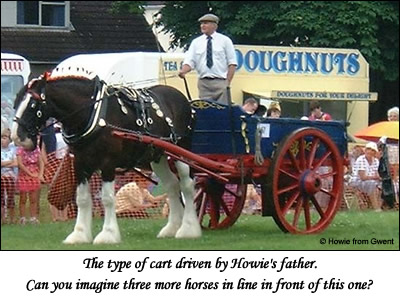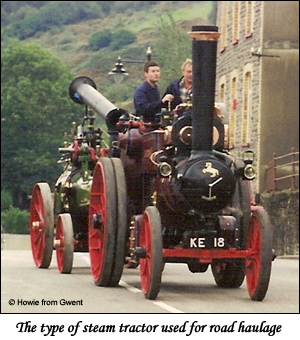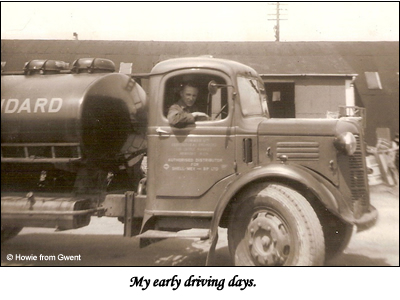My father was in haulage all his life. When he started work in 1913, at the age of twelve, it was in a quarry burning limestone. After a few years he went on to be a stable lad, looking after the cart-horses. A few years later he became a carter. We often talked of his experiences “on the road” and I remember him telling me of times when he would have as many as four shires horses pulling a cart of stones up the hills in our local area.

He would have to walk most of the journey, leading the front horse. Then, when they returned after a long day, it was time to clean and rub down the horses, put new bedding down and feed them. All this before he could go home for a good night’s sleep. This was common practice and it was as nothing for them to travel twenty miles on a return journey, as most goods were delivered that way.
These included the milkman, the baker and the coalman. The coalman would have to go to the railway sidings, fill and weigh all the sacks to the correct one hundred weight and then deliver it to the customers. Sometimes the coalman carried the sacks through the house to the coal shed or down a cellar and he was not the most welcome of callers on a rainy day. Then there was the rag and bone man, who went through the streets collecting unwanted items, sometimes paying a few pence in return. Ours had a wooden leg, he collected anything and it was all taken back to his warehouse to be sorted. Everything was recycled, so nothing new there.

I have no photos of my father’s cart, the picture on the right is one I snapped at a local show. Can you imagine three more horses in line in front of this one?
One time, when I went with my dad haymaking, I was riding on the horse’s back across a field collecting hay. I slipped and fell under the horse and lay there frightened, with those big hooves around me. The horse stopped instantly, with one foot poised above me, something I will remember forever. I was pulled out and calmed down, then made to sit back up there. All through my life I have had such a love and respect for these fine animals.
As kids we would love to hang on the back of the carts for a ride and we’d get told off for being stupid.
Then appeared the huge steam tractors which were used for heavy loads and jobs such as tar spraying. This was often done by steam lorries, fitted with a tank for heating the tar. The tar was sprayed on the road and then the stones were spread over and steam rollers would compact the stones down. It was hard manual work very different from our modern methods.

In about 1930 my father moved on to a lorry, still in the same type of work but a lot quicker. Not long after that I started to join him whenever I was off school. Most of the materials he carried had to be loaded by hand with a shovel. Tipper trucks were only just coming into use. He carried on working in road haulage until his mid seventies and then retired.
He insisted that my brother and I learned a trade for a better future. I became a motor engineer but never lost my love of getting out on the road. So, in later life, I went to work for a haulage contractor as a mechanic and relief driver. One of my early driving jobs was as a tanker driver, and then I went on to long distance driving.
The tanker I drove was used to deliver heating oil and fuel to the local farms and dealers in our area. Older members may remember the paraffin stoves that were in many homes. Our trade name was Aladdin Pink, I can still smell it, as it is now our form of central heating
When I was a long distance driver a typical journey from South Wales to London would take two nights, the day in between was to unload and reload for the journey home on the second night. There were no motorways in those days, so journeys took longer.
I did this type of work for fifteen years, then I left it all behind and opened my own repair workshop. That ended in with my retirement in 1994, so that is almost a whole life in transport in the 20th century.
Howie from Gwent
© Howie from Gwent 2009
Sources
Personal and family memories, recollections and photographs